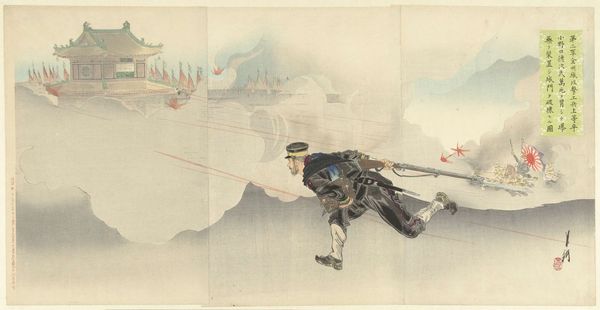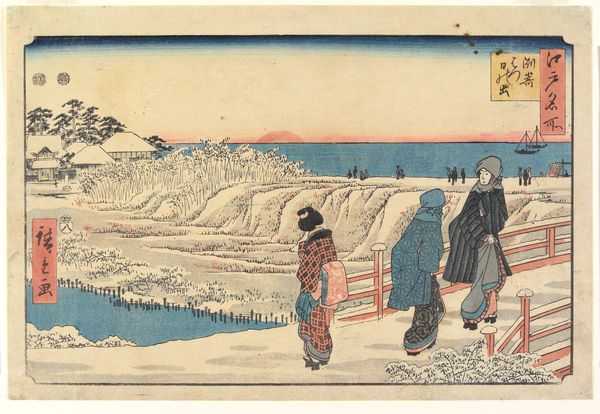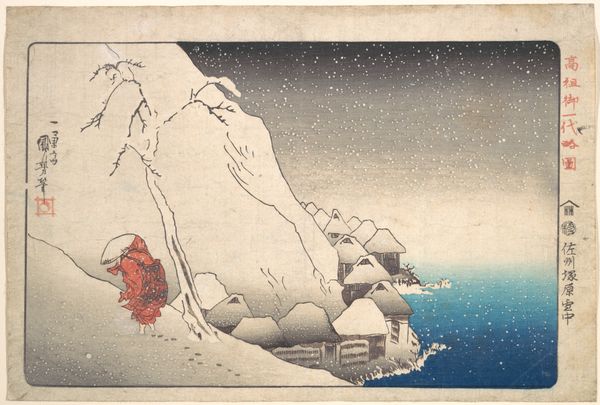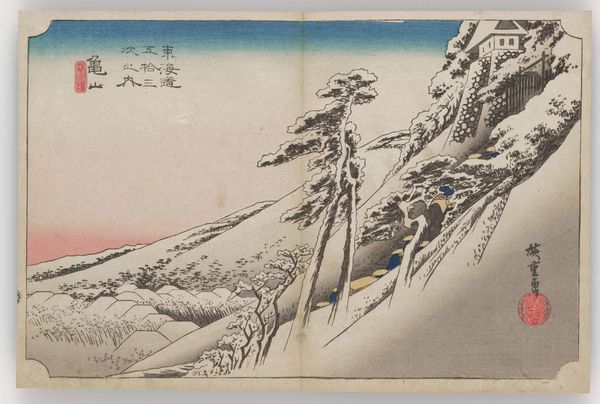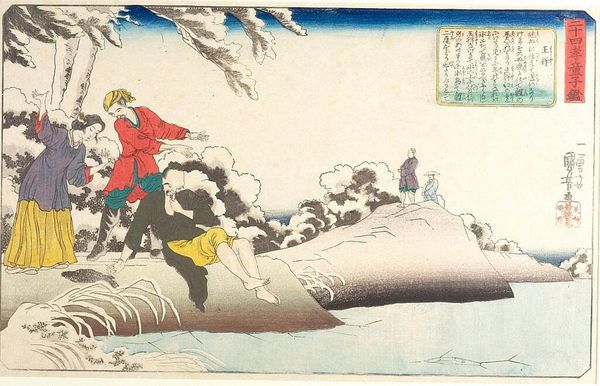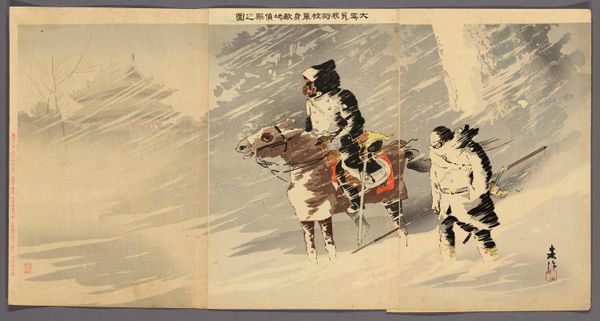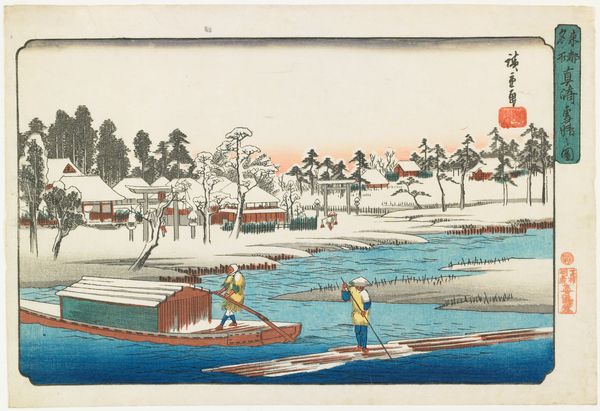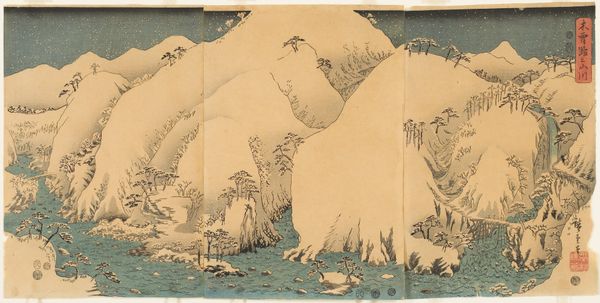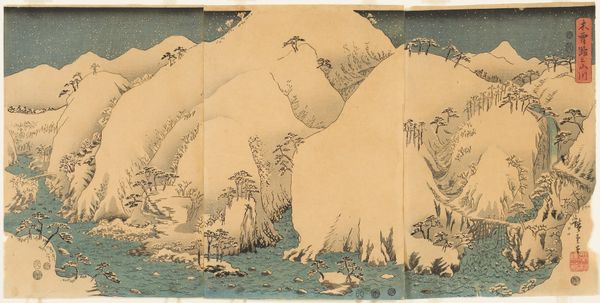
Copyright: Public domain
Curator: Ogata Gekko's "Major General Ōdera at the cliff," created in 1895, offers a compelling glimpse into a specific moment in history through the lens of Ukiyo-e and western impressionistic techniques. This mixed-media print showcases not just military personnel, but a confluence of cultural and political dynamics. Editor: Wow, my initial feeling? Cold! I mean, look at all that snow! The limited color palette and stark lines really create a feeling of austerity and stillness. There's this somber mood about the scene; something feels suspended. Curator: The depiction of the Major General at the cliff positions him as both a figure of authority and a representation of Japanese expansionism during the late 19th century. Understanding this image means engaging with the complexities of imperial ambitions and their impact. How might we interpret his posture at the cliff's edge? Editor: He’s so isolated, right? Gazing outward toward the ships, away from the immediate flurry. He looks more contemplative than commanding. And the cannon next to him only half-buried in snow; that makes you question the narrative of control, doesn’t it? It’s this weird mix of readiness and frozen inertia that grabs me. Curator: Indeed, it speaks to the tensions of that era. The blending of traditional Japanese woodblock printing with Impressionistic watercolor techniques underscores the cultural exchanges happening then. Note the flatness of the landscape—a classic Ukiyo-e element. This intertwining of styles reflects a Japan grappling with modernization and Westernization, which adds a layer of identity questioning. Editor: Totally. It feels like it's trying to hold onto something while reaching for something else entirely. You see that everywhere - not just in art - that time. Even the snow has personality – not soft and fluffy, but heavy, wet…almost mournful. You could write a whole story just about those clumps of snow. It speaks of burden. Curator: I agree. And Gekko subtly nods towards the rising militarism while embedding a quiet reflection within. Considering how narratives shape identity, especially during conflicts, who do you imagine this piece speaking to then versus speaking to us now? Editor: Well, then? Propaganda, probably. An idealized, stoic image. Now? It makes me uneasy. It shows that conflict is hardly clear-cut. It asks us to wonder about those standing at the cliff, not just looking outward, but inward too. Curator: Absolutely. Reflecting on the continuities between historical and present-day struggles provides critical insight. It serves to engage a necessary contemporary conversation about power, identity, and representation in art. Editor: Yes, there’s this strange enduring tension between the pretty art style and this really disquieting atmosphere. That's why this resonates, I guess. The quiet before… something.
Comments
No comments
Be the first to comment and join the conversation on the ultimate creative platform.

